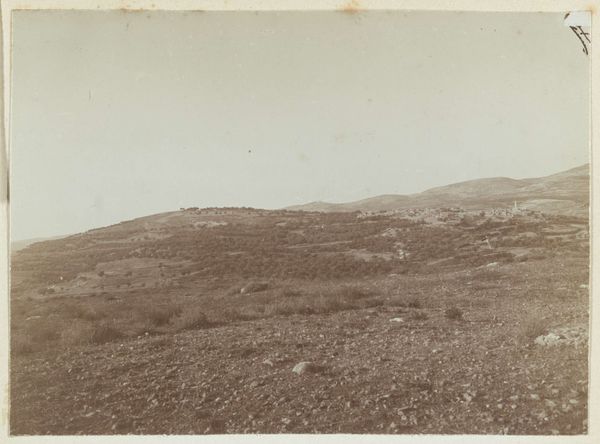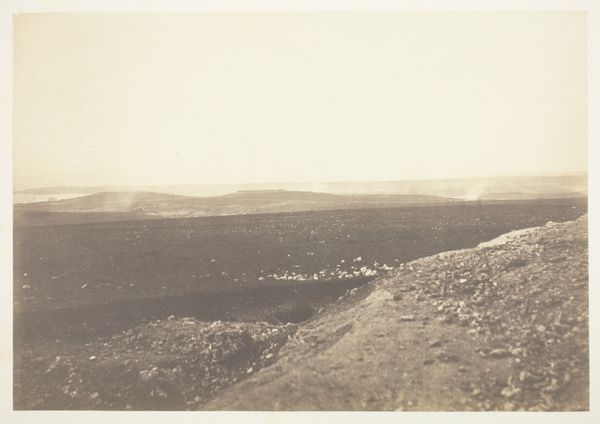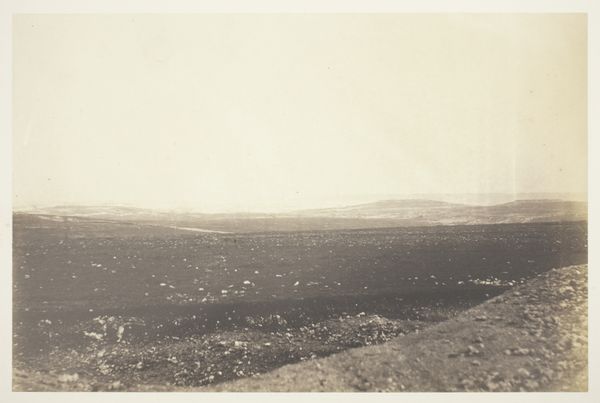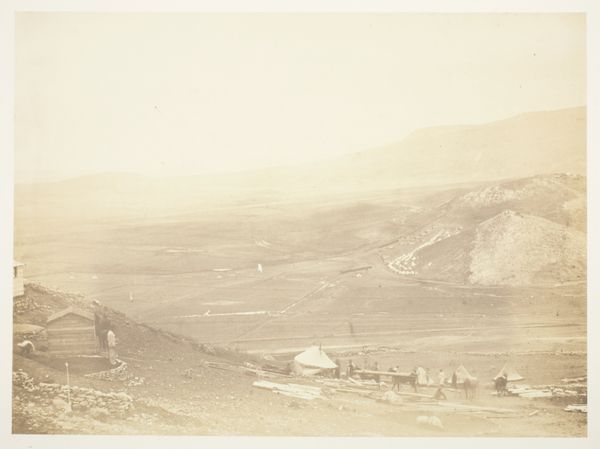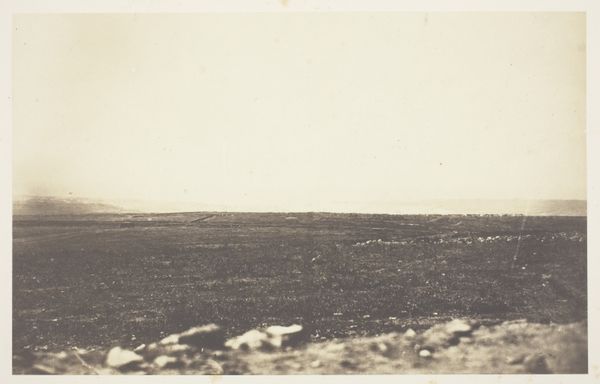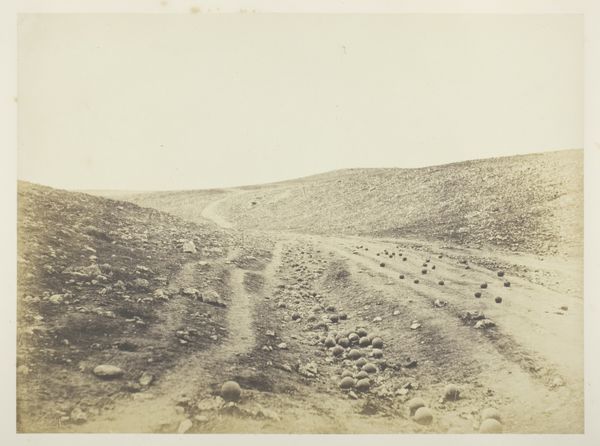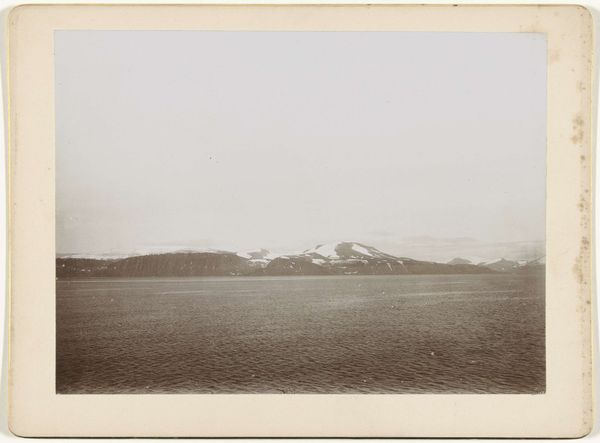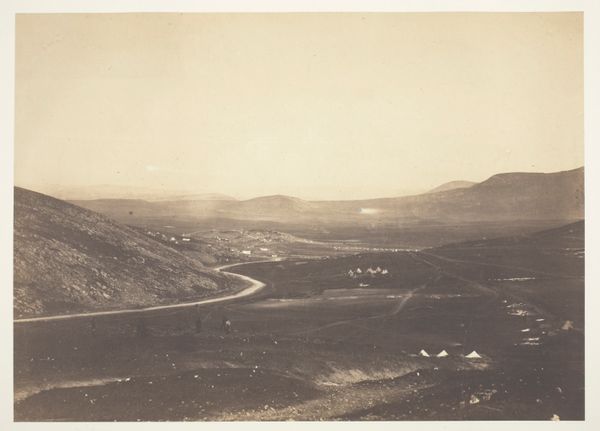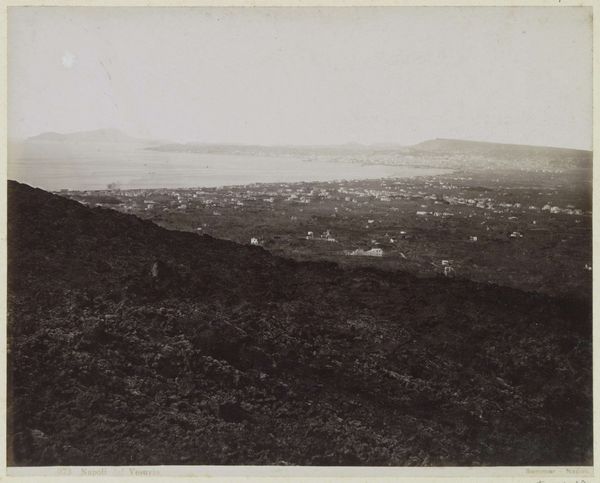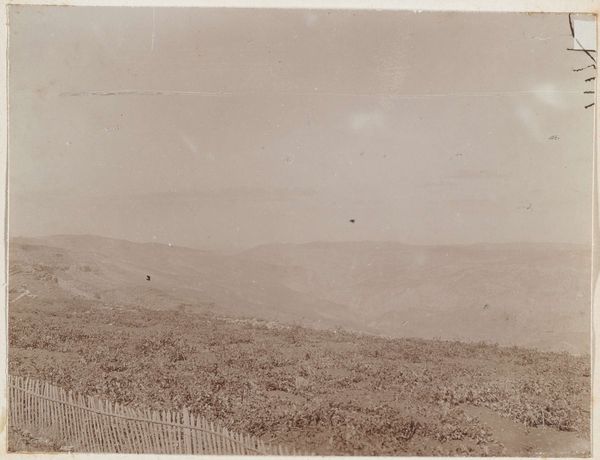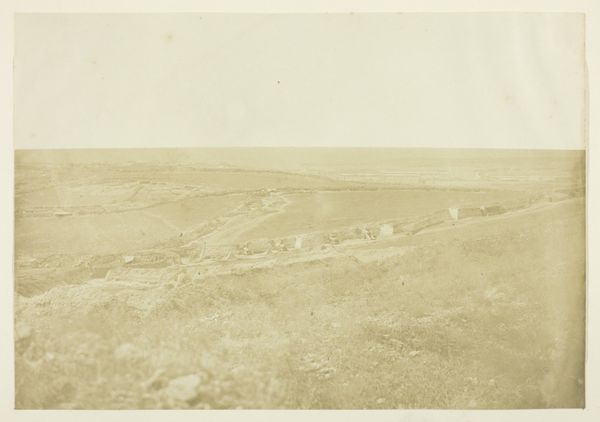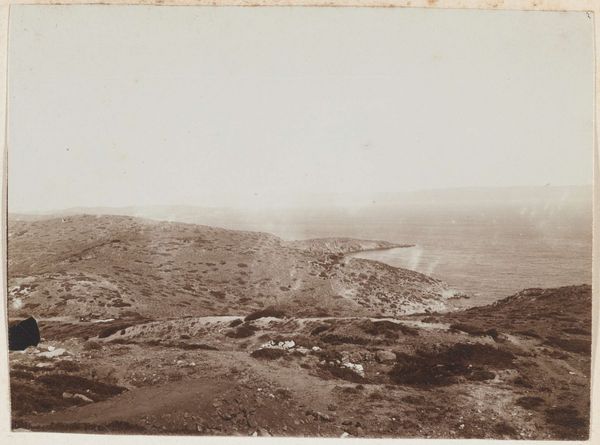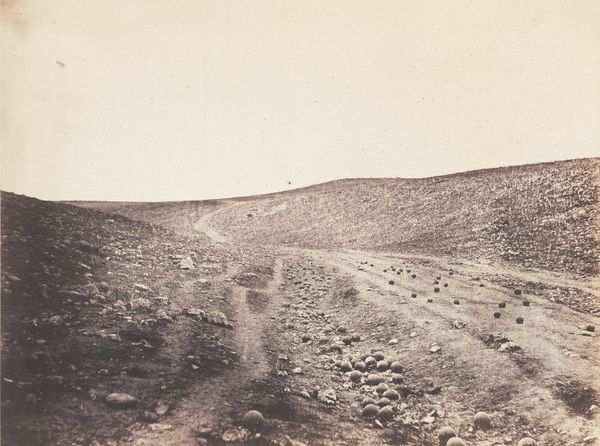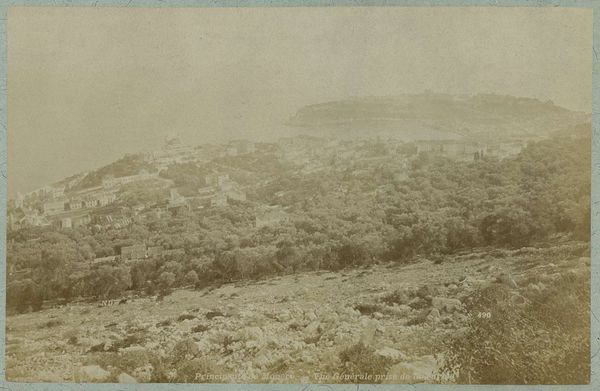
Dimensions: 16.8 × 25 cm (image/paper); 40.4 × 53.3 cm (mount)
Copyright: Public Domain
Curator: This photograph, "The Guard's Redoubt, Inkermann," was taken by Roger Fenton in 1855. It's a landscape print from the Crimean War era. What are your first impressions? Editor: Stark, isn’t it? A vast, muted landscape, almost devoid of obvious human presence yet undeniably marked by it. The tonal range feels limited by the conditions, offering almost a melancholy stillness. It's also quite a flat landscape in general with the hill behind. Curator: Fenton was commissioned to document the war, aiming to present a dignified, perhaps even sanitized, view for the British public back home. Given your understanding of materials, what does the paper choice suggest about his aims? The photograph's muted palette also adds another layer. Editor: Given that it is a war photograph, it may give way into discussing the economic, material and labour concerns that might have taken place, with certain interests involved. I imagine obtaining quality paper during wartime would present immense difficulties. It signals the cost and constraints. The photographic process itself—the developing, printing, the logistical challenges of outdoor work—highlights the sheer effort of image-making amidst conflict. It invites questions about authenticity and the distance between representation and reality. Curator: Absolutely. The romantic style employed juxtaposed with the reality of conflict evokes potent contrasts. It is a historical and social landscape that demands critical engagement. We can discuss gender and race. Who got represented in the British empire and who didn't? Who got access to be material or commodities and who was completely barred and segregated from it? It evokes class politics and the realities of war. Editor: That's the rub, isn't it? This wasn’t just a recording; it was shaping a narrative. There’s labor expended for that artistic direction to reach British high society as commodities in an early iteration of mass media production during war times. So the photograph becomes a material object imbued with intent, a construction. The scale reinforces the grandeur, the paper becomes a medium for power itself. Curator: Thinking about it this way emphasizes the complex and often obscured processes by which images attain their significance within prevailing paradigms. It forces us to reconsider our position relative to those pictures. Editor: Indeed. By focusing on materials and methods, we are grounded in the practical conditions of both its making and viewing; hence offering new points for interpretation. The question here is what makes this guard redoubt? Is this hill or the bodies protecting this terrain?
Comments
No comments
Be the first to comment and join the conversation on the ultimate creative platform.
